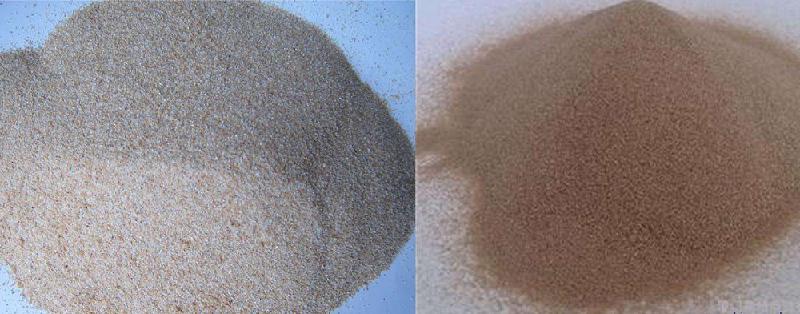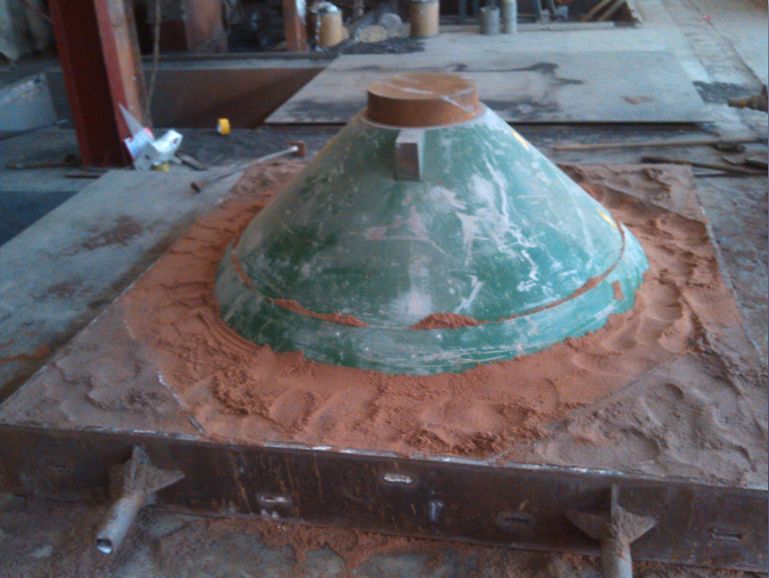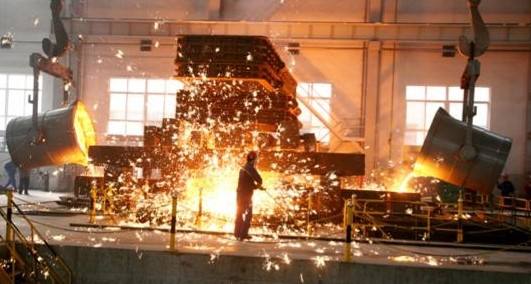This article describes a special
sand processing plant ie. low expansion foundry sand. This
sand washing plant can produce high quality low expansion and low air evolution foundry sand. The casting quartz sand produced by this sand washing plant can effectively improve the surface quality of castings, greatly reduce various casting defects and improve the yield of castings.

Some defects in sand casting are caused by the thermal transformation expansion of quartz grains during casting, i.e. the volume of quartz grains increases by about 17.4% when they change from β-quartz structure to α-squamous quartz structure. When the phase transformation is completed and cooled to normal temperature, the α-squamous quartz is no longer restored to the β-quartz, but transformed to the gamma-scale quartz. Then the γ-squamous quartz is heated and cooled to form a reversible phase transformation reaction with the α-squamous quartz, i.e. from theα-squamous quartz to theγ-squamous quartz. Its volume growth (from room temperature to above 870℃) is very small, less than 1%. It is only about one eighteenth of the volume growth of the former.
Using the above physical characteristics of quartz, the quartz sand used in sand moulding was heated and calcined to transform the β-quartz into α and γ quartz, and then the quartz sand withγ quartz structure at room temperature was used for casting moulding and coring. The volume expansion of sand is less than 1% even when the sand is heated up to 1400 ℃. The low thermal expansion is similar to that of zirconium sand and other special moulding materials, but the cost is very low.
This kind of low expansion quartz sand also eliminates the defects such as sticky sand, sand hole, sand inclusion and the disadvantage of sand granulation in the original sand casting, and the addition of coal powder, heavy oil and iron oxide powder is not necessary in the raw sand, which can change the original harsh production environment of sand casting, and is also convenient for the reuse of used sand and the cleaning of castings. It's much easier.

The gas produced by quartz sand at high temperature can be removed while calcining quartz sand, such as vaporization of crystalline water, spontaneous burning of organic matter, decomposition of some metals and non-metallic oxides, etc. The content of these gases in raw sand is 3-8 ml/g (measured at 850 ℃). Therefore, the cast quartz sand treated by phase transformation is low-gas quartz sand, which is an effective method to eliminate the porosity defects easily produced in sand moulding.
Table 1 is the experimental comparison data of low expansion casting sand and ordinary quartz sand, quartz sand and zircon sand with mitigating auxiliary materials. All quartz sand are used to make coated quartz sand. Its properties are as follows.
Table 1
|
Material |
Common sand |
Common sand + Mitigation excipients |
zircon sand |
Low Expansion Quartz Sand |
|
Expansion relief accessories |
|
Graphite, Fe2O3 |
|
|
|
Raw sand weight (kg) |
200 |
200 |
250 |
200 |
|
Resin content |
2.5% |
2.5% |
2.0% |
2.0% |
|
RT (Mpa) |
3.5-4.0 |
3.2-3.7 |
4.0-4.5 |
4.0-4.5 |
|
Flexural strength (Mpa) |
6.5 |
6.0 |
7.0 |
7.5 |
|
gas evolution (ml/g) |
17 |
17 |
10-12 |
9-11 |
|
1000℃linear expansivity (%) |
1.2-2.4 |
0.7-1.0 |
0-0.4 |
0-0.4 |
|
Casting scrap rate |
>30% |
12% |
<1% |
<1% |
|
Cost (usd/ton) |
210 |
330 |
1350 |
330 |
According to Table 1, it can be seen that phase transformation treatment of quartz raw sand can change the physical and chemical properties of sand surface, improve the bond strength between quartz raw sand and some organic and inorganic bonds, increase the tensile, compressive and flexural strength of raw sand and raw sand by 20-35%. If the original strength is maintained, the amount of binder can be reduced, which not only reduces these types and cores. The cost of sand can also reduce the gas production of these sand moulds and cores, which is also the measure to eliminate the air hole in the parts.

The following is the production process of low expansion cast quartz sand.
1.Raw silica sand requirements
Natural or man-made quartz raw sand of various specifications: SiO2 content is more than 90%, clay content in raw sand is less than 0.3%; man-made quartz powder of various specifications: Sio2 content is more than 97%.
2. Heating and roasting
The above raw materials are scrubbing by
attrition scrubber and roasted in a special powder material heating furnace. This kind of roaster can be continuously and automatically heated, feeding and discharging. When roasting, it should be slowly heated to a predetermined temperature above 870℃, and the temperature of the heated material layer is uniform. It can also be roasted in other simple furnaces, fed and discharged by song, and stirred by manual discharging. Coal, coke, medium gas, petroleum gas, liquefied gas, diesel oil, heavy oil and electricity can be used as energy sources of roaster.
3. Quality inspection: X-ray diffraction is used for lithofacies analysis to detect whether quartz has completed phase transformation.
Application Case 1
The raw material is scrubbed raw sand with a grain size of 50 to 100 mesh, SiO2 content of more than 91% and clay content of less than 0.3%. Then the sand is evenly laid on the chain grate of the heater kiln. The thickness of the sand is 100-150 mm, the temperature of the kiln is 1000℃, and the chain grate moves forward slowly, so that all raw sand is continuously roasted at 1000 ℃ for 2 hours, automatically discharged and cooled to room temperature, which is low expansion foundry sand.
Application Case 2
Artificial quartz sand of 40-70 mesh is selected. The content of SiO2 is more than 97%. It is heated slowly in tunnel kiln to 950 ℃ and roasted continuously for 2 hours at 950 ℃. The sand is cooled automatically to room temperature. The foundry sand can be used for the moulding and core making of steel castings.
Application Case 3
Artificial quartz sand with about 270 mesh is selected and its SiO2 content is more than 97%. It is slowly heated to 900℃ in powder material heating furnace and roasted continuously at 900℃ for 1 hour. After discharging, it is cooled to room temperature. The foundry sand produced can be used as core coating for cast steel and cast iron castings.
Suggestion: In sand washing plant of foundry sand,the raw materials sand must be pure, free of impurities and clay. Both natural sand and artificial sand need to be pre-treated.




